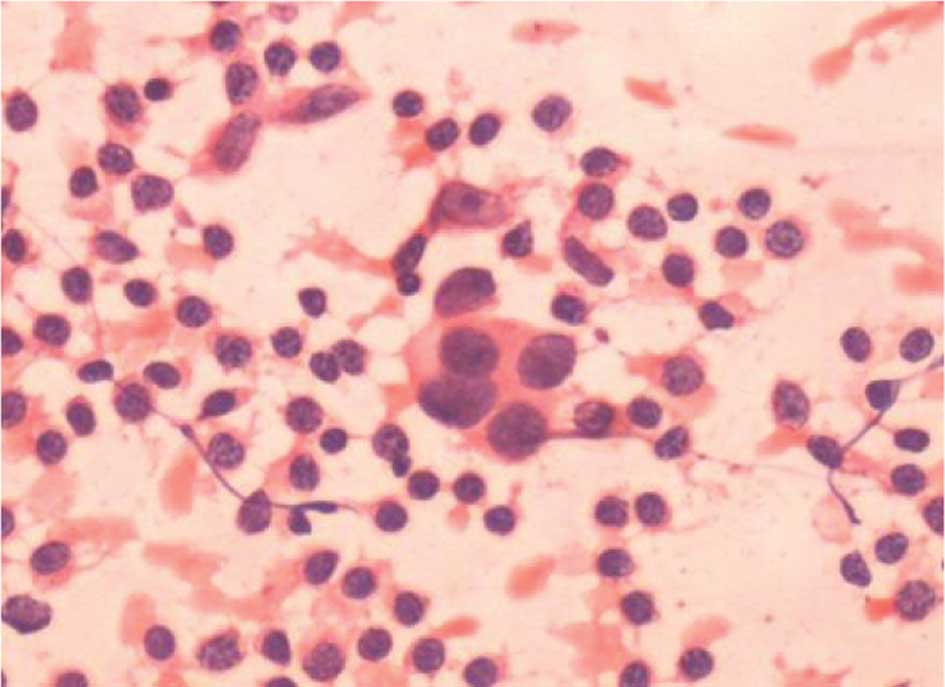Factors associated with the misdiagnosis of sentinel lymph nodes using touch imprint cytology for early stage breast cancer
- Authors:
- Published online on: January 13, 2011 https://doi.org/10.3892/ol.2011.233
- Pages: 277-281
Metrics:
Total
Views: 0 (Spandidos Publications: | PMC Statistics:
)
Total PDF Downloads: 0 (Spandidos Publications: | PMC Statistics:
)
Abstract
Accurate intraoperative diagnosis of sentinel node metastasis enables the surgeon to make an immediate decision to proceed to axillary lymph node dissection (ALND), thereby avoiding the economic and psychological costs of a second operation. The present study aimed to evaluate the clinical value of touch imprint cytology (TIC) and investigate the potential factors associated with misdiagnosis. A total of 366 patients with Tis-T2 breast carcinoma were included after undergoing successful sentinel lymph node biopsy (SLNB). TIC was routinely performed intraoperatively, and the results were compared with definitive histological assessments of serial sections (SS) with hematoxylin and eosin (H&E) staining. A total of 992 SLNs from 366 patients were used in the study. Based on the final histological diagnosis, the sensitivity, specificity and overall accuracy of TIC was 76.6, 98.8 and 92.3%, respectively, on a per patient basis, and 79.9, 98.9 and 96.1%, respectively, on a per node basis. TIC was significantly more sensitive for macrometastasis than micrometastasis (80.0 vs. 28.6%, P<0.01). Of 9 total ‘false positives’, 3 were due to micrometastasis which were not identified by serial section with H&E staining, 4 were actual false-positives which were due to interpretation error, and 2 were due to sampling error. The majority of the false-negatives (28 of 30 SLNs) were due to micrometastasis in the SLNs (sampling error). In conclusion, TIC is feasible for clinical use and is able to detect macrometastasis in the SLNs of early stage invasive breast cancer patients with an acceptable accuracy while its ability to detect micrometastasis is limited.











